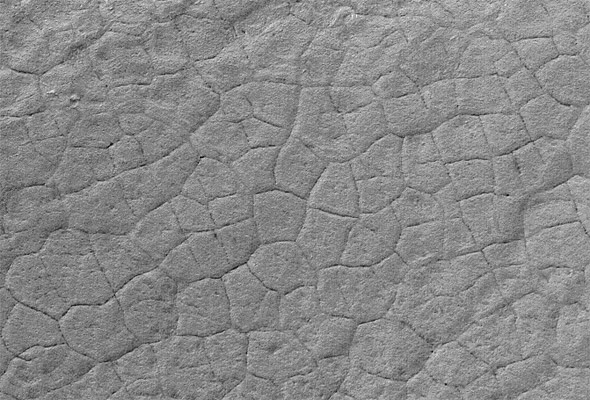

This image shows polygonal features on the surface of Mars near the planet's South Pole. Similar features are found in the Arctic and Antarctic on Earth, and near the North Pole of Mars as well. On Earth, polygons like these generally form as underground ice repeatedly freezes and thaws. Polygons on Mars might mean that something similar is going on, and thus that there might be water ice beneath places where the polygons form.
Orbiting spacecraft have observed many other odd, and often beautiful, features and patterns on land near the poles of Mars and on the Martian polar ice caps. Seasonal freezing and sublimation of dry ice (frozen carbon dioxide) in the polar caps creates weird fingerprint terrain, numerous pits, swiss-cheese terrain, and strange spider web patterns. The North Pole is surrounded by a huge field of sand dunes. Dunes near both poles display odd patterns each Martian year as they lose their winter ice. Layers of ice and dust, deposited year after year, have built up extensive layered terrain near both poles.